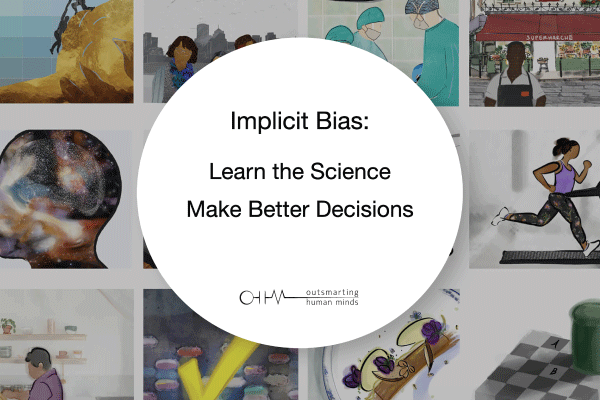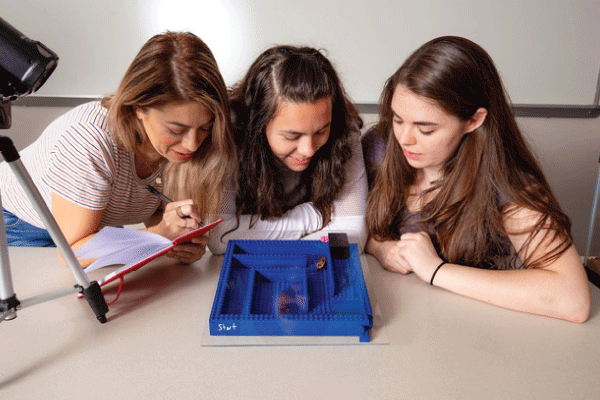APS Spotlight
APS Teaching Fund Showcase
Grants support accessible statistics, outreach on implicit bias, and undergraduate animal studies
With support from the APS Fund for Teaching and Public Understanding of Psychological Science, three teams of researchers are providing new resources for educators and their students. Using $5,000 grants from the Small Grants for Teaching Projects program, the teams aim to make learning statistics more accessible to students with disabilities, to inform the public about the science of implicit bias, and to provide more affordable—and ethical—opportunities for animal studies in undergraduate labs.
The APS Teaching Fund was established through a $1 million endowment from the David & Carol Myers Foundation. For more information on the fund, visit psychologicalscience.org/smallgrants.
The Accessible Toolbox: A Website for Teaching Statistics in Psychology to Students with Disabilities
Nicole Gilbert Cote, Jared Schwartzer, and Natasha Anderson (Mount Holyoke College)

With a growing number of students registered as having a disability on college campuses, there is a pressing need to better support educators on methods of universal design and strategies for teaching students with disabilities. However, many institutions are limited in their ability to provide instructional support and training on how to best address various disabilities in the classroom, particularly in regard to teaching statistics in psychology.
To address this limitation, Gilbert Cote, Schwartzer, and Anderson developed the Accessible Toolbox, available at commons.mtholyoke.edu/theaccessibletoolbox, to deliver a multitude of resources for instructors to better address the pedagogical needs of students with disabilities and various other barriers to success with statistics. The Accessible Toolbox offers activities that have been tested by students and consultants with disabilities, strategies to help students combat math-related anxiety, tips for working with neurodiverse learners, and information on how to support students who are blind or visually impaired; it also features advice from students with learning differences.
In addition, the researchers have developed a 3D statistics toolkit for learners who are visually impaired. The kit consists of a Braille label maker, graphing paper, and playing cards, as well as materials designed to support manipulative, tactile graphing, including reusable wax sticks, foam sheets, and three hardboard distributions (positively skewed, negatively skewed, and normal). The Accessible Toolbox is able to offer a limited number of free kits to instructors who request one at [email protected].
“All students with learning disabilities deserve to take courses taught by instructors who understand neurodiversity and apply that knowledge to the classroom,” Gilbert Cote said.
Outsmarting Human Minds: Interactive Teaching Modules on the Science of Implicit Bias
Mahzarin Banaji and Olivia Kang (Harvard University)

Humans make hundreds of decisions every day, both big and small. Often, these decisions are made with deliberation and are intended to result in sound choices for ourselves and our societies, yet research in psychological science shows that the human mind is as fallible as it is extraordinary. Alongside rigorous and informative inputs come contributions from implicit processing that shape and skew human judgments in subtle and often undetected ways. There is broad public fascination about these blind spots: what common biases and heuristics we fall prey to, how they affect our choices and perspectives, and what we can do to intervene.
Although many resources exist to teach people about implicit processes, they often stop short of allowing learners to interact with the data in active, customizable, and personal ways. To accomplish this, Banaji and Kang are developing a new suite of online teaching tools. Available at outsmartinghumanminds.org, this interactive database of explorable data sets (including maps, demonstrations, and quizzes) brings the science to life for the general public. For instance, the demonstration “Should You Trust Your Vision?” brings a 2006 experiment by Dan Levin and Banaji to life, allowing users to experience a powerful visual illusion—one with social consequences.
In addition to its interactive offerings, Outsmarting Human Minds (OHM) also produces video and audio modules covering topics like the Stroop effect (delays in processing incongruent information—e.g., delays in naming the color red when it is used to write the word “blue”) and the ways first impressions based on faces or accents fool us. The latest module features a map that visualizes the shift in implicit biases related to race, age, and sexual orientation in the United States between 2007 and 2016. In the future, OHM will also include customizable Implicit Association Tests and an interactive module on long-term implicit attitude change.
“OHM’s greatest impact has been to show that teaching about bias can be humble, engaging, and inclusive,” said Kang. “We show that everyone can be both the target and perpetrator of implicit bias, and that having implicit bias is not a villainous thing but a side effect of being human.”
Roach Lab: Using Cockroaches to Increase Learning Outcomes at a Discount
Darby Proctor and Marshall Jones (Florida Institute of Technology)

Animal research has long been an essential part of psychology. But although comparative animal studies offer an invaluable window into the human mind, undergraduate animal laboratories, traditionally operated using pigeons and rats, are in decline because of budgetary constraints and ethical concerns over using vertebrates for teaching purposes.
The Many Benefits of Working With Cockroaches
- Roaches are less expensive to maintain than other lab animals: They’ll eat almost anything, from cornmeal to lettuce.
- Roaches are easy to breed.
- Invertebrate work is generally exempt from ethical oversight, and there is no evidence that roaches need psychological enrichment (although Proctor and Jones suggest providing enrichment such as toilet paper tubes and burrowing soil to be safe).
One solution is to use invertebrate animals—in particular, discoid cockroaches. This insect may evoke revulsion in some, but the species poses few ethical concerns, is inexpensive to maintain, and is well suited for demonstrations in courses on learning, memory, and behavior.
Proctor and Jones have developed a comprehensive resource for implementing the roach model in university classrooms at roachlab.org. This resource includes experimental protocols that were designed for (and sometimes by) undergraduates and cover both classical and operant conditioning. To further aid faculty in keeping costs down while using roaches as model organisms, the researchers also include designs for many of the experimental materials to be 3D printed.
The researchers are now collaborating with several universities, including Drake University, Bucknell University, Georgia State University, and Eastern Florida State College, to assess student opinions about using the roach model in the classroom. Although the project is still early in the data-collection process, Proctor said, students have described Roach Lab as a thought-provoking model that has helped them synthesize the ideas and information presented in their psychology courses by promoting a more active learning process.





APS regularly opens certain online articles for discussion on our website. Effective February 2021, you must be a logged-in APS member to post comments. By posting a comment, you agree to our Community Guidelines and the display of your profile information, including your name and affiliation. Any opinions, findings, conclusions, or recommendations present in article comments are those of the writers and do not necessarily reflect the views of APS or the article’s author. For more information, please see our Community Guidelines.
Please login with your APS account to comment.